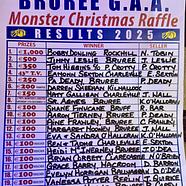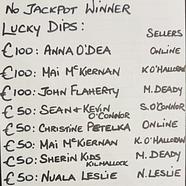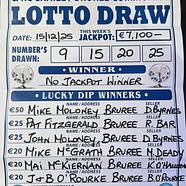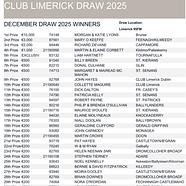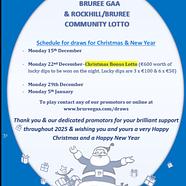Castletown Ballagran and Bruree came together in 2013 to form Killacolla Gaels and at the time is was just for minor grade in hurling and football. In 2015 this expanded to Under 14, Under 16 and Under 21 teams playing 15 a side also under the Killacolla Gaels. This year we will have U13 in preparation for U14 next year.
But why Killacolla Gaels? As with any club it is important to understand the history of your area and while all involved with Killacolla Gales would be very familiar with the history of their parishes, maybe not so much Killacolla?. The reason for the clubs selecting Killacolla as the name was due to the fact that it was the townland that was between the two clubs. But more important was the fact that there used to be a school there that built long lasting connections for people from both clubs, as there was a mix of pupils from Castletown/Ballagran and Rockhill/Bruree. The school building is still there and is now a private residence.
The following information is taken from local historian Mainchín Seoighe’s book “From Bruree to Corcomohide”
- The townland name of Killacolla may be of ecclesiastical origin. According to Logainmneacha na hEireann IMl. 1, Contae Luimnigh, this townland name derives from Coill an Chollaigh, meaning the Wood of the Boar, As against that, the 1840 ordnance map shows a site marked “old burial ground” in the townland. One would expect an old burial ground to make the site of an early church. So perhaps the name Killacolla derives not from Coill an Chollaigh, but from Cill on Chollaigh, the Church of the Boar?
- In 1859 the townland of Killacolla was divided between Rockhill/Bruree and Ballyagran /Colmanswell parishes, by far the larger part being in Ballyagran / Colmanswell. The part remaining in Rockhill/Bruree was probably retained by that parish because of the fact that Killacolla school was situated there.
- Killacolla School
- The first national school in the parish was established as early as 1848 in Killacolla. On 1st August,1856, Fr Ryan wrote to the Commissioners of National Education applying for payment of the salaries of two assistant teachers in the school. The composition of the teaching staff of the school - the school seems to have been divided into male and female sections - was most unusual. Daniel Cusack is listed as teacher, with John Cusack, aged 17 1/2 , a former paid monitor, listed as ‘proposed assistant’. As well we find Catherine Cusack described as principal, and Eliza Cusack, aged 18 ½ as assistant teacher. The staffing appears to have been very much a family affair. It is stated that the District Inspector had recommended the appointments of the assistants because the growing attendance rendered it impossible to conduct the school without assistants.
- More about Killacolla School.
- On 12 December, 1860, Fr. Denis Cregan, the then P.P. of Rockhill/Bruree, applied to the Commissioners of National Education for salary for work mistress, 27 year old Ellen Dunworth, who taught plain needlework in Killacolla School, two hours every day, five days a week, in ordinary class room, 28’ x 18’. The work mistress had commenced work on December, 1860. There was one other teacher in the school, Catherine Cusack, whose salary was £26 a year. The number on rolls was 91, all females. Average daily attendance for previous four months was 43. As already stated, it would seem that Killacolla school was divided into a boys’ and girls’ school.
The ultimate aim for both clubs is that our young people can play Gaelic Games at a high level, but more importantly have fun !! It has taken a huge amount of work on both sides to make it a success but being honest there is always more to be done !!
Both clubs are benefiting from Killacolla Gaels with players making big impacts on each clubs adult teams.
I will add more the the above as i research some more.
“The wild boar features prominently in the cultures of Indo-European people, many of which saw the animal as embodying warrior virtues. Cultures throughout Europe and Asia Minor saw the killing of a boar as proof of one's valor and strength”.


